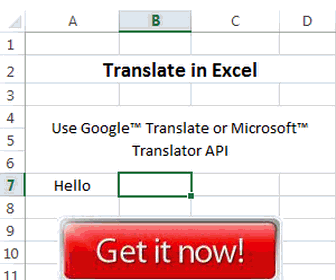When it comes to launching a tech startup, every tech entrepreneur should wield a powerful tool in their arsenal, one that can help secure the necessary funding to bring their vision to life. That tool is the compelling startup pitch deck.
Pitching your tech business idea and software startup ideas to potential investors is a pivotal moment in an entrepreneur’s professional journey.
In a mere matter of minutes, or even seconds, the entrepreneur faces the daunting challenge of convincing angel investors that both they and their tech startup are worthy bets, all within the high-pressure, fiercely competitive realm of venture capital.
However, the value of crafting an exceptional pitch extends beyond merely securing an audience. It serves as a means for budding entrepreneurs to crystallize precisely what their business entails, how it distinguishes itself from the competition, and where its future trajectory lies.
Presenting a startup pitch deck to potential investors is an endeavor that can be both exhilarating and nerve-wracking. The pitch’s ability to capture and sustain the interest of investors is paramount, regardless of how groundbreaking your idea may be.
Here, we’ll look at key considerations to keep in mind when crafting a pitch deck for your tech startup.
What is a Pitch in Startups?
A pitch refers to a concise and persuasive presentation or proposal that entrepreneurs use to communicate their business idea, product, or service to potential investors, partners, customers, or other stakeholders.
The primary goal of a startup pitch is to generate interest, secure funding, or gain support for the startup’s growth and development.
A startup pitch serves several key purposes:
- Attracting Investment: One of the primary goals of a startup pitch is to secure funding from investors. Entrepreneurs often pitch their business ideas to potential investors, demonstrating the value and potential of their startup in the hopes of securing financial backing.
- Communicating the Business Idea: A pitch is a way to effectively and succinctly communicate what the startup does, why it’s unique, and how it addresses a specific problem or need in the market. It’s an opportunity to tell a compelling story about the business.
- Building Partnerships: Startups may also use pitches to form partnerships with other companies, industry leaders, or complementary businesses. These partnerships can help with distribution, marketing, or technology integration.
- Attracting Customers: In some cases, startups pitch their products or services to potential customers, especially in the B2B (business-to-business) space. This helps potential clients understand how the startup’s solution can benefit their organization.
- Recruiting Talent: A startup pitch can also be used to attract talented individuals who may want to join the startup team. A well-crafted pitch can convey the startup’s mission and vision, making it appealing to potential employees.
Startup pitches are often delivered in various formats, including elevator pitches (very brief pitches that can be delivered in the time it takes to ride an elevator), pitch decks (presentation slides summarizing the key points of the pitch), and in-person or virtual presentations.
The effectiveness of a startup pitch can significantly impact the startup’s ability to attract the necessary resources, partners, and investors to drive its growth and success. Therefore, entrepreneurs often invest time and effort into perfecting their pitch to make it as compelling and persuasive as possible.
A typical startup pitch often includes the following key elements:
- Problem Statement: The pitch begins by identifying a specific problem or pain point in the market. This sets the stage for explaining why the startup’s solution is needed.
- Solution: The entrepreneur presents their innovative product or service and explains how it effectively addresses the identified problem. This part often includes a demonstration of the unique value proposition.
- Market Opportunity: Entrepreneurs provide data and insights about the target market, including its size, growth potential, and the demand for their solution. This demonstrates the business opportunity to potential stakeholders.
- Business Model: Startups outline their revenue model, including how they plan to make money, pricing strategies, and potential monetization avenues.
- Competitive Analysis: Entrepreneurs assess the competitive landscape, highlighting their competitive advantages and how they differentiate themselves from existing or potential competitors.
- Traction: This section showcases any evidence of the startup’s progress or success, such as user metrics, sales figures, partnerships, or significant milestones achieved.
- Team: A brief introduction to the startup’s team members, their relevant experience, and their qualifications is essential to build trust and confidence in the venture.
- Financial Projections: Entrepreneurs often include financial forecasts, including revenue projections, expenses, and profitability estimates. This provides insight into the startup’s growth potential.
- Ask: The pitch concludes with a clear and specific request, such as the amount of funding needed, partnership opportunities, or customer acquisition goals.
What Makes a Great Startup Pitch?
A great startup pitch is not just about delivering a polished presentation – it’s about effectively conveying the essence of your tech or eCommerce business idea, building trust, and capturing the interest of your audience, whether they are investors, potential partners, or customers.
Here are key elements that make a startup pitch great:
- Clear and Concise Storytelling: Start with a compelling narrative that captures the essence of your business. Explain the problem your startup is addressing, the solution you offer, and the impact it can have. Make sure your story is easy to follow and relatable.
- Problem-Solution Fit: Clearly define the problem you’re solving. Emphasize its significance and the pain points it causes. Then, introduce your solution and show how it effectively addresses the problem. Ensure a strong alignment between the problem and your solution.
- Market Opportunity: Demonstrate that there is a substantial market for your product or service. Share market research, data, and insights that support your claims. Explain your target audience and the potential for growth in your chosen market.
- Unique Value Proposition (UVP): Highlight what makes your startup unique and superior to existing solutions or competitors. Explain how your UVP sets you apart and why it matters to your target audience.
- Traction and Milestones: Share key milestones, achievements, and any traction your startup has gained. This could include user numbers, revenue, partnerships, awards, or product development progress. Traction serves as proof of concept and can build confidence in your startup.
- Monetization and Business Model: Clearly outline your revenue model and how you plan to make money. Explain your pricing strategy and any monetization strategies. Investors want to know how you will achieve profitability.
- Team Expertise: Showcase your team’s expertise and qualifications. Investors want to know that you have the right people with the necessary skills to execute your plan successfully.
- Ask and Use of Funds: Be explicit about what you’re seeking from your audience, whether it’s funding, partnerships, or something else. Explain how the funds will be used and how it will contribute to the growth and success of your startup.
- Engaging Presentation: Use a well-structured pitch deck with clear visuals, such as slides and infographics, to complement your verbal presentation. Keep the design clean and professional. Visual aids can help convey information more effectively.
- Practice and Rehearsal: Practice your pitch extensively, ensuring it flows smoothly and naturally. Rehearse in front of friends, mentors, or advisors and gather feedback. Aim to deliver a confident and enthusiastic presentation.
- Handle Questions Gracefully: Be prepared to answer questions, including potential objections. Anticipate what your audience might ask and have well-thought-out responses ready.
- Passion and Authenticity: Convey your passion for the startup and the problem you’re solving. Authenticity can be a powerful motivator for your audience, making them more likely to believe in your vision.
- Adaptability: Be prepared to adapt your pitch to different audiences. Investors, partners, and customers may have different priorities and concerns, so tailor your pitch accordingly.
- Time Management: Respect your audience’s time by keeping your pitch within the allotted time frame. Conciseness is key, especially in high-pressure pitch situations.
What is a Good Pitch Example?
A good pitch example can serve as a source of inspiration and a model for your pitches. While pitches can vary greatly depending on the context and the audience, here’s a simplified and hypothetical example of a good startup pitch that includes essential elements:
Elevator Pitch (30 Seconds): “Hi, I’m [Your Name], and I’m the founder of [Your Startup Name]. We’re revolutionizing the way small eCommerce businesses manage their finances. Unlike traditional accounting software, our platform simplifies bookkeeping, saving several types of eCommerce business owners up to 15 hours per month.
We’ve already onboarded 200 businesses in our pilot phase and achieved a 90% customer retention rate. We’re seeking $500,000 to scale our operations and capture a significant share of the $15 billion small business accounting software market.”
Pitch Deck (Structured Presentation)
Slide 1: Introduction
- Title: [Your Startup Name]
- Tagline: “Simplifying Small Business Finances”
- Your Name and Position
- Brief Introduction
Slide 2: The Problem
- Clear explanation of the problem: “Small businesses struggle with time-consuming and error-prone bookkeeping.”
- Pain points and inefficiencies in the current process
Slide 3: The Solution
- Your tech solution: “Our cloud-based accounting platform automates bookkeeping.”
- Benefits: Time savings, reduced errors, ease of use
- Unique features that differentiate your solution
Slide 4: Market Opportunity
- Market size and potential: “$15 billion small business accounting software market.”
- Target audience and demographics
Slide 5: Traction and Milestones
- Key achievements: “200 businesses onboarded during our pilot phase.”
- Customer retention rate: “90%.”
Slide 6: Business Model
- Explain how your startup will make money: “Subscription-based pricing model.”
- Pricing details and potential income streams
Slide 7: Team Expertise
- Highlight the skills and experience of your team members.
- Showcase the strength and diversity of your team.
Slide 8: Financial Projections
- Realistic financial projections: Growth, revenue, and profitability over the next few years.
- Assumptions and financial model details.
Slide 9: Ask and Use of Funds
- Funding request: “We’re seeking $500,000 to scale our operations.”
- Use of funds: “Hiring key talent, marketing, and expanding our customer base.”
Slide 10: Exit Strategy (if applicable)
- Discuss potential exit strategies, such as acquisition or IPO.
Slide 11: Conclusion and Call to Action
- Summarize the key points of your pitch.
- End with a clear call to action: “We invite you to join us on this journey.”
This example provides a simplified structure for a pitch deck. Keep in mind that your actual pitch may need more slides and detail, and you should adapt it to your specific startup, industry, and audience.
A good pitch combines a compelling narrative with data, demonstrates a deep understanding of the problem and solution, and instills confidence in your ability to execute your vision.
Be Bold
Perfecting your startup pitch takes time. Each presentation is an opportunity to refine your pitch and make it more compelling and persuasive. As you continue to develop your pitch, remember that a great pitch is not only about the words you say but also about the passion, authenticity, and confidence you convey to your audience.
The art of a successful pitch also involves practicing, rehearsing, and gathering feedback, all of which contribute to your ability to present confidently and authentically. Moreover, staying engaged with your audience, respecting time constraints, and being open to questions and objections are crucial aspects of a great pitch.
As you seek to secure funding, partners, and customers, use these tips to refine and perfect your pitch over time. With persistence, passion, and a commitment to continuous improvement, your startup pitch can become a powerful instrument for achieving your entrepreneurial goals.



















